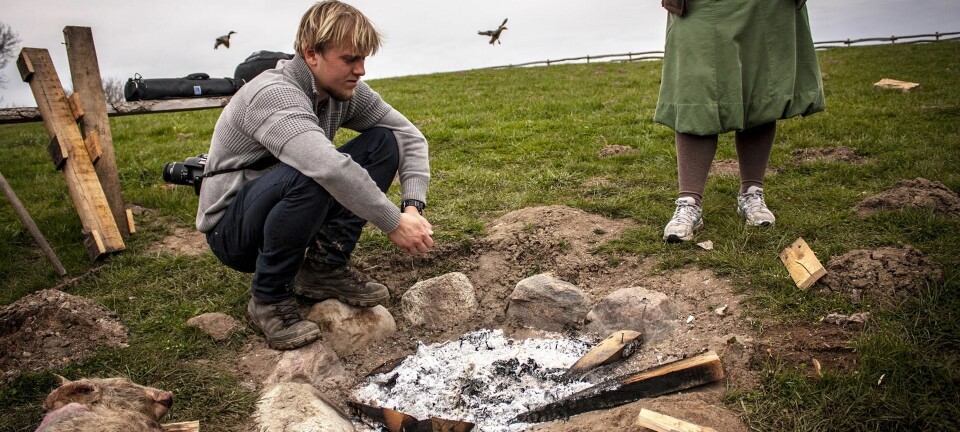This article was produced and financed by University of Stavanger

Stone age boy or girl?
The Viste boy was found in 1907 in Norway. Now he will have his DNA analysed - and maybe a gender change. The 8,000 year old child might turn out to be a girl.
Denne artikkelen er over ti år gammel og kan inneholde utdatert informasjon.
A child lived 8,200 years ago at Viste, outside Stavanger in southwestern Norway - and died at the young age of 15.
Even though the remains are referred to as the Viste Boy, it is not certain that this is a male skeleton. Scientists thought it was a male on the basis of older reports, but Viste Boy could well turn out to be Viste girl.
A small piece of the skull has now been sent from the Museum of Archaeology in Stavanger to Sweden for DNA analysis.
This is part of a Scandinavian project which aims to understand prehistoric migration patterns to and around Scandinavia.

The two main theories are that people either came from east, from the areas that are now modern Sweden, Finland and Russia, or they came from south, from continental Europe.
The DNA analysis on Viste Boy may give answers to this question.
Skeletons from several periods
Also samples from three other skeletons were sent for analysis, including part of an upper arm that was found in an excavation at Sømmevågen near Stavanger’s Sola Airport last year.
The arm is from an individual who lived 2,000 years later than Viste Boy.

If the DNA material from both skeletons can be analysed, scientists may find out if there was continuity in the population in Rogaland across the Mesolithic, i.e. 10,000 to 5,000 BC, or whether immigration occurred during that time.
"It’s very exciting to have two Stone Age skeletons from areas that are as close, but with a 2000-year age difference", says osteoarchaeologist Sean D. Denham from the Museum of Archaeology in Stavanger.
The remains of several other humans bones were found in a cave at Viste. These belonged to an adult human. DNA analysis will also be carried on one of the bones, and perhaps kinship will be established.
Found in 1907
When Denham recently examined the Viste Boy’s skull and jawbone, he started to question the gender of the skeleton. He thinks it has some feminine features.
Scientists have now started calling the Viste Boy ‘the Viste Individual’ instead, in anticipation of a possible gender clarification by the Swedish laboratory.
They recently packed away the skeleton in boxes. The bones are in good condition, but Denham and conservator Hege Hollund will perform a more in depth assessment of the remains and will take X-rays to document the different parts of the skeleton.
"We know so little about the history of the skeleton, about what happened after it was discovered in 1907. We can see that one bone is not real. But we don't know why, how or when the copy was made", says Hollund.
-------------------------------------
Read the Norwegian version of this article at forskning.no
































